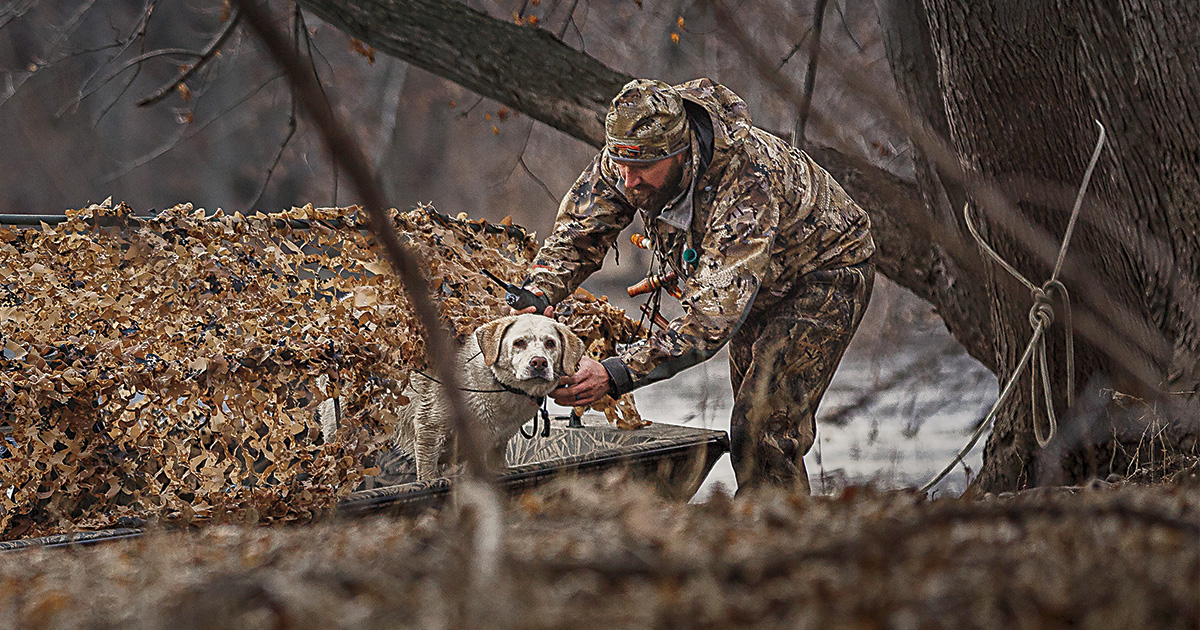Retrievers: Lost Dog!
Practical tips and technologies to prevent your retriever from going missing, and to find him if he does
Practical tips and technologies to prevent your retriever from going missing, and to find him if he does

Modern GPS collars help you keep track of your retriever’s whereabouts in real time. A nameplate on his collar and an implanted microchip will help you get him back if he ever gets lost.
If there’s anything that feels worse than being unable to locate your dog, I don’t know what it is. Fortunately, in this age of cell phones, microchips, and GPS-enabled collars, lost dogs tend not to stay that way as long as they used to.
I went through a lost-dog ordeal many years ago on a trip in northern Wisconsin. I got my dog back safe and sound, but the entire episode could have been avoided if I’d been paying attention to her whereabouts. I let her wander around off-lead while we were getting a campfire going, then I got distracted, and the next thing I knew, she was gone.
This brings up the starting point for any conversation about lost dogs: In non-hunting situations, you shouldn’t turn your dog loose unless you’re in a secure, escape-proof environment or a in position to keep him under supervision and exert direct, immediate control over his movements. An e-collar is good for this. A lead is even better.
Don’t assume that because your dog is obedient and well-trained that he’ll always behave according to form. You never know when a stray whiff of scent will prompt him to follow his nose, no matter where it takes him. It’s what hunting dogs do, after all. Err on the side of caution by keeping your dog in sight and under control.
Still, stuff happens, especially in the excitement and occasional chaos of a hunt. Waterfowl dogs don’t run as much risk of getting lost as upland dogs do, but they still find ways to reduce their owners to quivering masses of worry. Probably the most common scenario in this respect is the retriever that goes after a crippled duck or goose, disappears over the horizon, and doesn’t return.
This is why you want to make it as easy as possible for whoever finds him to find you. And now that everyone and their brother owns a cell phone, the simplest and best way to make sure that happens is to put your mobile number and other up-to-date information on a nameplate attached to your dog’s collar.
In addition to the nameplate, your dog should be microchipped. The microchip—which is about the size of a grain of rice—is implanted between the dog’s shoulder blades by a veterinarian and, when read by a scanning device, displays an identification number and other information unique to that dog. Having a microchip is especially important in instances in which external identification, such as a nameplate or ID tag, is missing and you need to claim your dog from an animal shelter. Be aware that for the microchip to do what it’s designed to do, it must be registered with a database, such as AKC Reunite.
Bottom line? A nameplate and a microchip should be considered mandatory. They won’t prevent your dog from getting lost, but they’ll vastly improve the odds of a successful reunion.
Beyond that, you can pretty much eliminate the possibility of a lost dog from the equation by equipping him with a GPS collar. These units, which allow you to track your dog’s whereabouts in real time, come in two basic types: Those that work via an app on your smartphone and require a cellular connection to function, and those in which the collar itself sends a signal directly to a receiver that you carry with you.
Examples of smartphone-type collars include the Tractive and Fi Series 3. Both are waterproof and have the advantage of being vastly less expensive than dedicated GPS units, although they do require a monthly service fee. Their biggest limitation is that they only work in areas with cell coverage.
Dedicated GPS collar-receiver systems, on the other hand, work everywhere. (Note: Some models are illegal in Canada.) The major players in this arena are the same ones that dominate the e-collar market: Garmin, SportDOG, and Dogtra. These units start at $430 and go up from there. They are more expensive, but if you want the ultimate in fail-safe tracking for your dog, they might be the best way to go.